Imagine you are launching a product in a global market with a pitch-perfect campaign, but your slogan confuses the audience across borders. In today's interconnected world, you need a software to convey your message and effectively engage your audiences. In this article, you will explore various language localization software to avoid miscommunication. These practices are essential for building authentic relationships to maximize impact among audiences.
- Part 1. What Is Language Localization Software and Why It Matters
- Part 2. Major Uses of Localization Programs
-
Part 3. Best Localization Software for Video Translation in 2025
HOT
- Part 4. Top 5 Localization Management Software in 2025
- Part 5. Software Localization Best Practices to Follow
- FAQs About Localization Software
Part 1. What Is Language Localization Software and Why It Matters
A language localization platform is designed to adapt interfaces across various cultural contexts. These tools address local languages and cultural nuances to create an authentic experience for users. Localization management platform can centralize translation for documents and social media posts. It can also streamline processes, such as review cycles, terminology management, and translation memory. The tool enables the use of time and currency formats with idiomatic expressions to reflect local preferences.
Why Localization Software Matters?
This software delivers word-for-word translation to ensure the cultural relevance with the audience. To drive higher satisfaction, this software enables educators, organizations, and businesses to engage users in multiple languages, breaking the barriers of communication.
Part 2. Major Uses of Localization Programs
Localization programs play a vital role in adapting digital content for global audiences, ensuring seamless user experience. Below are major use cases, highlighting impact of transformation:
1.Web Localization: It helps brands and new platforms reach a global audience, reducing bounce rates and increasing conversions.
2.Software Localization: Software Localization can improve user satisfaction and broaden market opportunities for system utilities, productivity tools, and mobile apps.
3.Game Localization: Publishers can unlock access to boost sales, access new markets, and enhance player engagement within the gaming community.
4.Educational Media Localization: Localized e-learning platforms foster better understanding of corporate training programs and ensure inclusivity for international students.
Part 3. Best Localization Software for Video Translation in 2025
Imagine you want to promote your educational content among different audiences, but it is essential to translate the content into multiple languages. Expanding this content globally is efficient using BlipCut AI Video Translator. This innovative platform provides accurate translation in over 130 languages and dub and add subtitles below original text.
This localization software can be used by content creators, marketers, and media outlets. Batch processing is convenient, as it simultaneously translates multiple languages at once. The BlipCut AI Video Translator tool offers contextual understanding, ensuring the coherence and meaning of the content.
Core Features
-
AI Accent Generator can help generate different accents for videos.
-
Voice Cloning is used to replicate your voice, enhancing trust among the target audience.
-
The video dubbing tool is used to dub all online videos for authenticity and accuracy.
-
AI Lip Sync helps generate lip-synced videos with perfect lip movements.
Step-by-Step Guide to Video Translating Using BlipCut AI Video Translator
Here is a comprehensive guide with straightforward navigation to transform videos into multiple languages:
-
Step 1. Access Main Interface of BlipCut AI Video Translator
First, access the main interface of the tool and hit the Create Now button to import your video.

-
Step 2. Upload Your Video and Select Target Language
Afterward, upload your video to translate it and press Target Language to select desired translation language from dropdown menu, and click the Translate button.

-
Step 3. Preview the Video and Export
Finally, when your video is translated into your targeted language, press the Export button to adjust output settings, and click Export again to download your translated video.

Part 4. Top 5 Localization Management Software in 2025
As businesses expand globally, choosing the proper localization management platforms becomes essential. Here are the top 7 options in 2025 that you can consider to create content in various languages:
1. Lokalise
One of the tools that lets you convert the language of your content by offering various translation options is Lokalise. Users get multi-step workflow automation for continuous localization for all types of content. You can integrate Lokalise with multiple platforms, like WordPress and Jira.
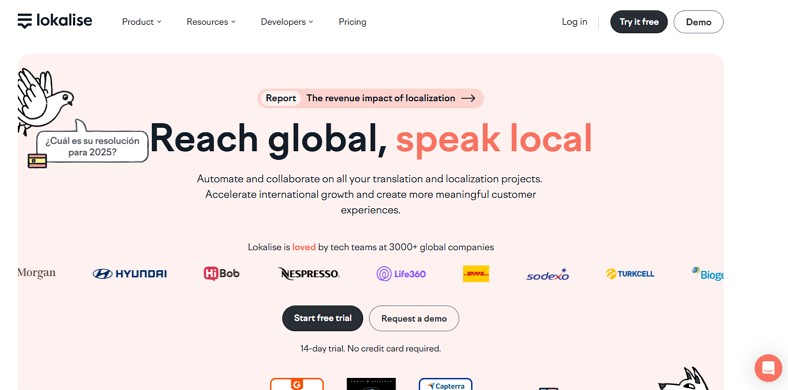
Key Features
-
The built-in spelling and grammar checker lets users create error-free content.
-
Multiple team members can work on single task using collaborative online editor offered by platform.
-
You get the ability to modify the text of the generated translation according to your preferences with this localization software.
Pros
![]()
-
Multiple translation variants are provided for each sentence, allowing you to select the most accurate one.
-
You can also integrate the tool within a game for real-time translation.
Con
![]()
-
The tool has a bit of a complicated interface, not suitable for non-technical users.
2. Crowdin
With 700+ app integrations, Crowdin allows users to localize their entire work projects efficiently. Besides deploying software in multiple languages, this platform allows you to launch and use mobile applications in more than one language.
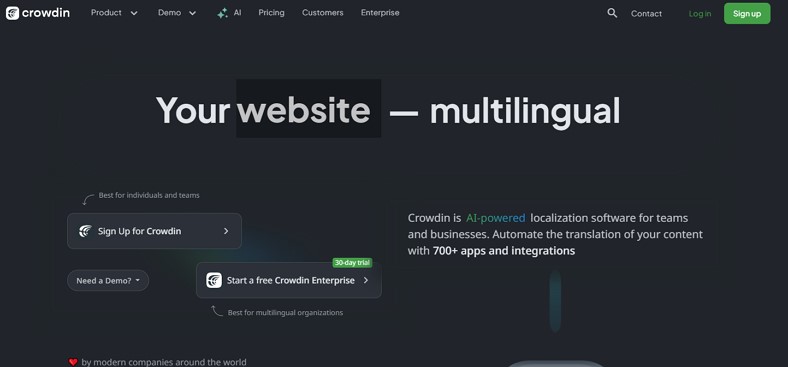
Key Features
-
You can create and manage your own glossaries in multiple languages.
-
Access the machine translation feature to generate instant translation for the required content.
-
It offers an AI assistant that helps you generate term definitions and translations.
Pros
![]()
-
You can select 30 languages for each project to localize your project.
-
An editor is provided to change translations according to your preferences.
Con
![]()
-
This language localization software has synchronization issues while integrating with programs.
3. Localazy
Whether it is your website or mobile application, Localazy offers support for 50+ frameworks. Localazy integrates with CI/CD pipelines using its CLI and SDKs for all operating systems. This allows automatic uploading of new texts with every code push and downloading of fresh translations.
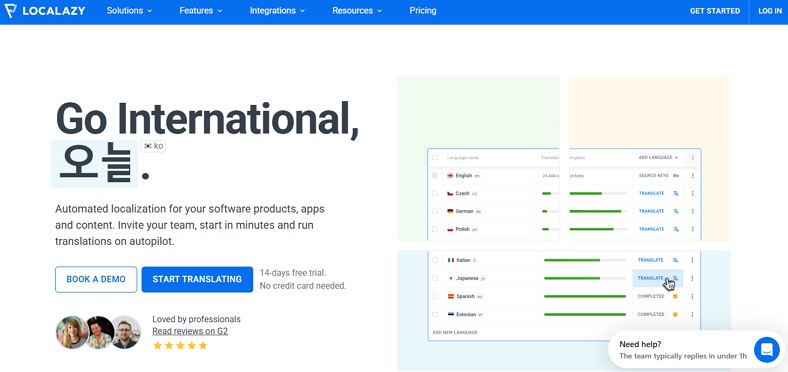
Key Features
-
Insert snapshot to generate translated content.
-
It provides you the ability to review the translations before deploying the project.
-
The tool also lets you edit a specific translation by clicking on the language name.
Pros
![]()
-
You can save a specific translation to the system to access instantly in the future.
-
It lets you connect up to 5 projects to localize in the language of your choice.
Con
![]()
-
Setting up an automated workflow is complicated as compared to other tools.
4. Localize
If you are looking for a software localization management tool that offers you an on-page editor for multiple languages, use Localize. You can integrate the tool into your program with simple JavaScript tags. The tool automatically detects all the content and pulls it in for machine translation.
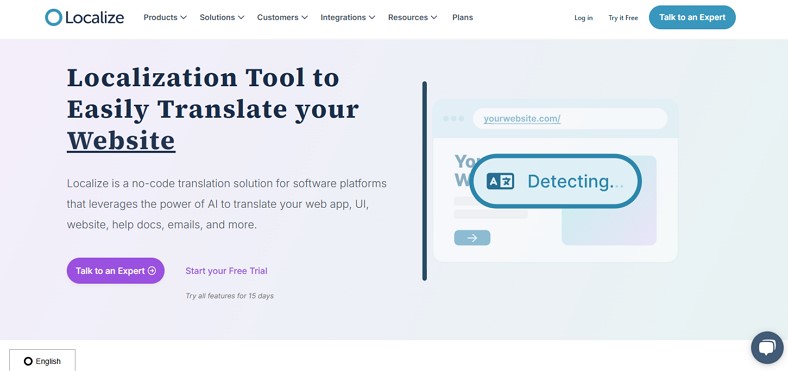
Key Features
-
You can create and manage multiple translations simultaneously using the intuitive dashboard.
-
Besides programs, it offers instant localization for Google Docs too.
-
The advanced reporting and analytics tool provides detailed insight on your projects.
Pros
![]()
-
You get the ability to translate your emails in any language.
-
The AI workflow automation lets you automate the localization for each project.
Con
![]()
-
The core automation heavily relies on JavaScript snippets.
5. Phrase
Phrase is a localization program that helps you localize all your content and projects in multiple languages at one place. The platform seamlessly fits into your ecosystem and helps manage and share data in multiple languages.
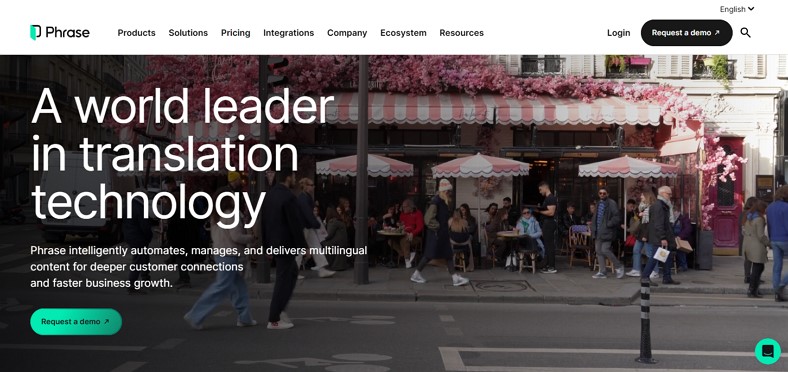
Key Features
-
You get the ability to integrate the platform with more than 50 frameworks.
-
Apart from software localization, it also offers document translations.
-
Users can customize the translation workflow according to their preferences.
Pros
![]()
-
You can connect unlimited projects to the platform for localization.
-
It offers localization support for mobile applications as well.
Con
![]()
-
The AI customization is limited compared to other localization tools.
Part 5. Software Localization Best Practices to Follow
Transitioning to practical implementation, successful software localization management depends on the following best practices to ensure quality and efficiency:
1.Leverage memory tools to reuse translated content, reducing turnaround time and ensuring consistency.
2. Develop comprehensive glossary for localization software with the approved terms. Brand voice and clarity can be maintained by utilizing technical phrases and UI elements in every language.
3. Integrate localization programs with CI/CD pipeline to automatically manage, detect, and deploy translations as part of a code release.
4. Implement stages of in-context, functional, and linguistic review, and involve native speakers to catch errors and ensure an optimal user experience.
FAQs About Localization Software
-
Q1. How does a localization management platform differ from basic tools?
A1: Localization management programs go beyond basic language convergence, such as automating workflows and offering management features. Whereas, basic tools focus on simple text editing and basic translation.
-
Q2. What features make the best website localization software?
A2: The best website localization software offers translation memory and code integration, making localization scalable and efficient.
-
Q3. Can software localization translation be fully automated?
A3: No, it cannot be fully automated with current technology, because complete automation risks introducing unnatural phrasing and cultural mismatches.
-
Q4. What are the most important considerations for software localization?
A4: Cultural relevance and linguistic accuracy are the important considerations you must maintain to ensure a seamless user experience.
-
Q5. Is there a difference between translation localization software and TMS?
A5: TMS can automate, organize, and manage the entire localization process, including collaboration and quality control. In contrast, localization software assists with language translation and cultural adaptation of content.
Conclusion
To wrap it up, in a globalized world, localization software has gained popularity for enabling authentic communication across markets. However, BlipCut AI Video Translator is considered the best choice for teams committed to global communication.
Leave a Comment
Create your review for BlipCut articles




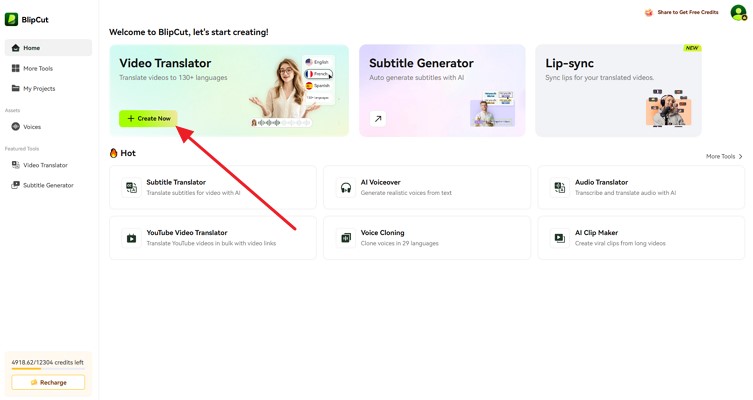
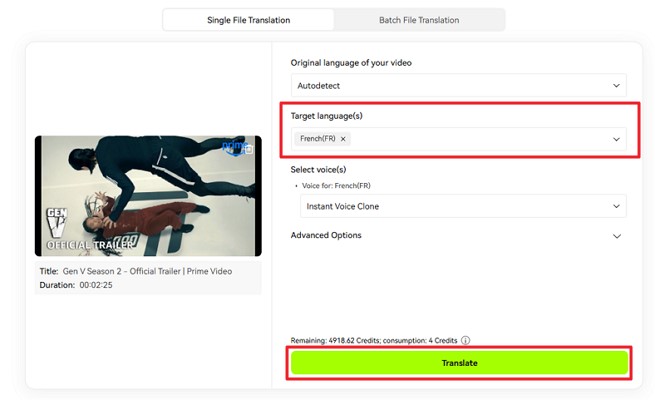
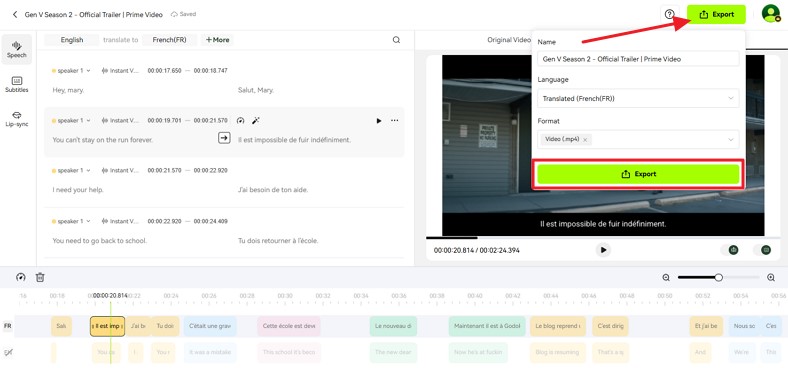

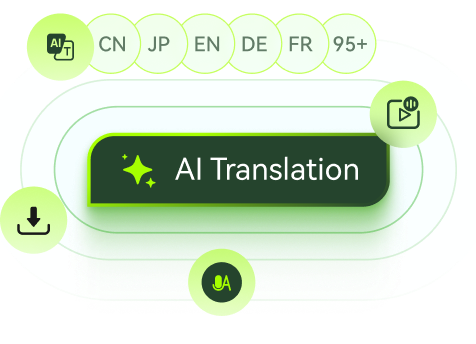



Blake Keeley
Editor-in-Chief at BlipCut with over three years of experience, focused on new trends and AI features to keep content fresh and engaging.
(Click to rate this post)